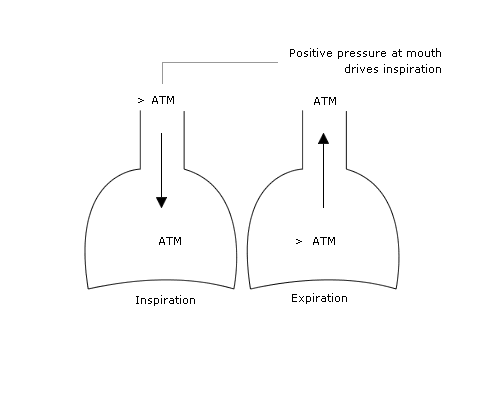Pressure Changes for Controlled Ventilation
Controlled ventilation (intermittent positive pressure ventilation – IPPV), uses positive pressure at the mouth to create a pressure gradient during inspiration.
A higher pressure is normally needed (~ 10-15 cm H2O) to deliver the same tidal volume during IPPV.
Again, the elastic energy stored in the lungs and chest wall provides the drive for expiration.
Question: What unwanted effect does IPPV have on the circulation?
Click here for answer.

Controlled ventilation (intermittent positive pressure ventilation – IPPV), uses positive pressure at the mouth to create a pressure gradient during inspiration.
A higher pressure is normally needed (~ 10-15 cm H2O) to deliver the same tidal volume during IPPV.
Again, the elastic energy stored in the lungs and chest wall provides the drive for expiration.
Question: What unwanted effect does IPPV have on the circulation?
Answer: The increase in mean intrathoracic pressure reduces venous return to the heart, leading to a fall in cardiac output – it is a similar effect to the Valsalva Manoeuvre.
